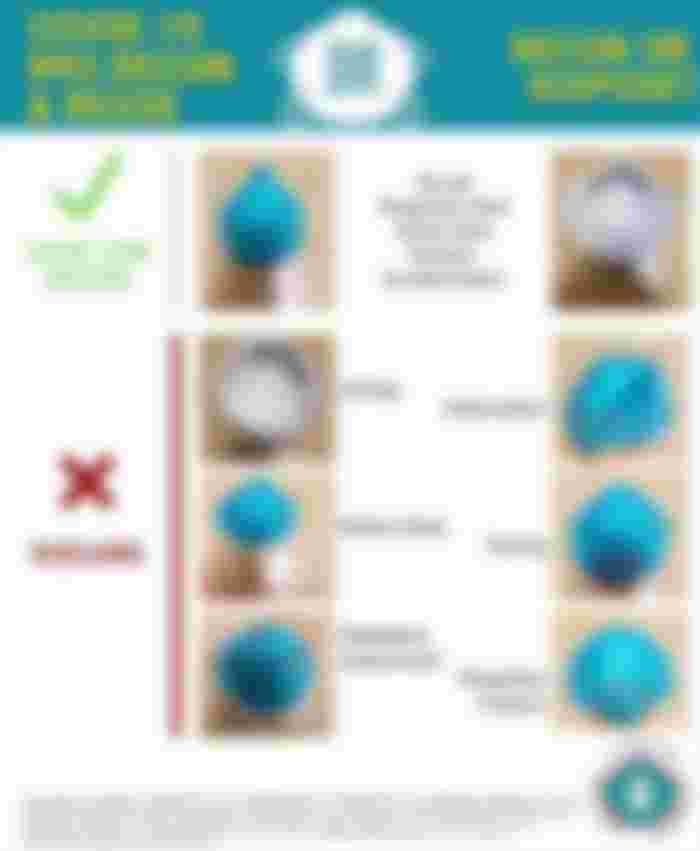Topic:
.: How a simple mask works
.: How the N95 mask works
.: Electrostatic filter layer
.: N95 means 95 number of the mask
.: How effective is the surgical mask
.: Mask reusability
Who doesn't know about N95 or KN95 mask now. Masks that may not have been easily seen in the country even 6 months ago are now available to peddlers. Although the use and circulation of this mask is very old, many people may not have heard of N95 or KN95 before 2020 or Kovid-19. Then when the N95 mask gradually became known to almost all the conscious citizens, now almost all of us know what this mask is, what it looks like, what color it is, how many layers it is or many people also know that this 95 means that this mask is able to prevent 95% germs. . Simply put, the phenomenon is somewhat similar, but the science behind this 95% germ resistance is extraordinary, completely different from any ordinary mask.
N95 and KN95
The two are almost the same thing. The N95 is the American standard and the KN95 is the Chinese standard. In terms of work, the two masks work the same, structure and power.
How the mask works:
Before we talk about N95, let's see what we mean by mask. For many of us, a mask is something like a filter. Just as mosquitoes do not allow mosquitoes to move from one side to the other, so a mask does not allow germs or dust from one side to move to the other. It's a lot like a normal mask, but a little different for the N95. There is a problem with comparing filters. That is, a sieve does not allow a particle larger than that hole to pass through its tiny holes, but any particle smaller than that hole can easily pass through the sieve. Just like mosquitoes can't go with mosquitoes but dust can go. So our ordinary masks are a bit like this. And the size of the dust or germs in the air is so small that even if we don't see the hole in the filter inside the mask, many small particles pass through it, because they are smaller than that hole. The N95 mask also has many tiny pores like a normal mask that acts as a filter. Normally, we would not be able to breathe without holes. But the specialty of N95 mask is that this mask can easily resist even very small particles from the tiny pores in it! A mask like a normal filter that can't.
How the N95 mask works:
The main purpose of the N95 mask filter is to bring the particles in contact with the fiber of the filter. No matter how big or small the size of the filter hole is, once you touch the fiber of the particle, it gets stuck there and does not spread in the air from there again. This means that the N95 mask does not actually act as a filter, but rather as a spider's web. Once something is trapped in the net, it will not escape, but the particle must touch the filter fiber. Particles that are larger than the size of the filter hole must be trapped in the fiber. But the science behind trapping particles that are smaller or much smaller than this hole is not actually fiber, but the particles themselves. The weak Van-der-Wallace ball is actually strong enough among many small particles on a microscopic scale that the effect of this ball is that the particles can stick to each other or to a surface. Now the question is how these small or medium sized particles can be brought into contact with the fibers of the mask. The first easy way to solve this problem is to use a few layers in the mask. This is because particles are more likely to be trapped in a multi-layer mask than a natural one. If a small particle in the first layer does not touch the fiber, then there are more layers, one or the other will. For this, 3 layer and 5 layer N95 masks are now available in the market, not 1 layer. The probability of a particle touching a fiber actually depends a lot on its size. Particles larger than 1 micrometer in size usually move in an almost straight path in the air due to their motion inertia. They are more likely to get stuck by touching one of the layers of the mask's multilayer filter. Particles 0.1 micrometers or smaller are so small that they constantly collide with other relatively large particles in the air and move in a zigzag direction at Brownian speeds. And because of their random movements, they are more likely to get stuck in one or another layer of the mask.
Electrate layer:
But the problem is with these two medium-sized particles. Particles of this size are the most difficult to filter. Because they are not heavy enough to go straight, they are not light enough to collide and do not move at Brownian speeds. These particles move with the flow of air, meaning that the way the air flows, the way these particles float. This means that we do not breathe in the air that is coming through the mask, in this air the particles can float up to our nose. And since air is also moving through the multilayer mask, these particles are also able to penetrate all the layers of the mask with that air. This is the main challenge (or problem) for any mask. To solve this problem, the N95 mask filter is made of a special type of fiber that can attract particles of any size. This is possible due to the electric field effect. The effect of an electric field can be observed in the variation of partial charge even in any charge neutral particle, due to which the particles are attracted to the source of the electric field. The school's physics book has a beautiful description of it in the static electricity chapter. But the fiber in the N95 mask is no ordinary static electrical fiber (common means that it is produced by friction, which is lost again after a while). Rather, these fibers have permanently stable electrical properties. This means that the fibers behave like a kind of permanent magnet. In the language of physics, such a substance is called electret. Just as it is possible to convert a piece of iron into a permanent magnet under the influence of a strong magnetic field, it is possible to convert a piece of plastic into a permanent electrolyte under the influence of a strong electric field. The fibers in the N95 mask's filters are actually electrodes, with long-lasting static electrical properties that allow them to attract particles of any size. And if a particle sticks to the fiber, there is no way to get rid of it. Mathematically, the N95 mask is about 10 times more capable of attracting particles than a normal fiber mask. And that's actually the main purpose of the N95 mask.
95 means what
This means that the N95 mask uses approximately 3 types of opportunities to prevent particles in the air. One is the van-der-Wallace ball of tiny particles, two are the multiple layers of the hall that filter any particle that travels in a straight path or in a curved path at brownian speeds, and three are the electrostatic properties of the fiber that attract particles of any size to the fiber. That's why the N95 mask can trap large particles well, trap many small particles well, and trap medium-sized particles relatively well. Exactly how many of these medium-sized particles a mask is able to trap is its percentage number. This means that the 95 of the N95 or KN95 mask actually indicates that this mask is able to withstand up to 95% of these medium-sized particles of air, which are the most difficult to trap.
This is the name of the N95 mask and the science behind 95% particle filter. Understanding how effective the N95 mask can actually be. But how much protection this mask is able to give you does not really depend on this mask, or more than that, it depends on the style of wearing your mask or the fitting of the mask on your face. If you wear a mask and it is empty on both sides, then this mask will not be able to give you any special protection, because the germs in the air can also enter through whichever way the air enters, then what is the benefit of hanging the mask in front. Again many N95 masks have exhale valves, through which the germs can come out and spread in the air during the inhalation of an infected person. Therefore, in the current Covid-19 situation, it has been advised not to use such an exhalation valve mask.
Disinfection and reuse of N95 mask
Decontamination of this mask can impair the effectiveness of the mask. The N95 mask is basically a disposable mask, meaning this mask is not suitable for repeated use day after day. But there is a huge global demand for the N95 mask for the Covid-19, which is why health workers have to reuse the same mask. That's why scientists are experimenting with ways to effectively reuse this mask. In case of re-use, care should be taken so that the electrostatic properties of the mask are not lost, this is the main strength of this mask. Soaps, liquids or wipes containing alcohol, sanitizers, bleaches, etc. can ruin this feature, so refrain from using these to clean the mask. Researchers recommend water vapor, hydrogen peroxide vapor, and UV-C radiation. Although the mask is physically damaged, its electrostatic properties can be damaged. Masks whose nose pins are broken or loosened are not suitable for re-use. Similarly, if the mask is torn, torn, straps, dirt on the inside or even twisted, it is advised not to reuse it.
Surgical mask
Surgical style masks have different qualities. A good quality mask has an electrostatic layer like the N95 mask, meaning a good quality surgical mask can also attract particles like the N95 mask. However, surgical masks are less effective because they have a weaker skin and face fitting. Masks in this category also have quality ratings. The best quality masks are marketed as surgical or medical masks and are rated ASTM Level 1 and are FDA (or other health organization) certified. Low quality masks have no ASTM rating and are also available in the market as surgical, medical, dental or isolation masks. It can be said that low quality masks usually do not have any electrostatic layer or even if they are, they are very weak. The outer layer of the advanced surgical mask, i.e. the colored layer, is fluid resistant which prevents droplets. That is why it is said to wear a mask by keeping this colored layer on the outside all the time. There are no rules for healthy or sick people in or out of color. Surgical masks are also disposable. However, if the surgical mask needs to be re-used, it is recommended that the mask be left for natural disinfection, which lasts for about 7 days. The decontamination method of surgical mask is not tested like N95, so single use is suggested.
Required Documentation:
Useful information on N95 and how to use surgical masks, how to apply and open masks, how to disinfect masks in different ways, etc. are attached to the post in the form of pictures.


























